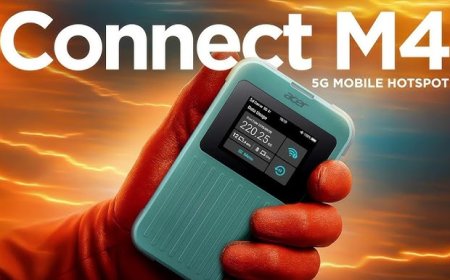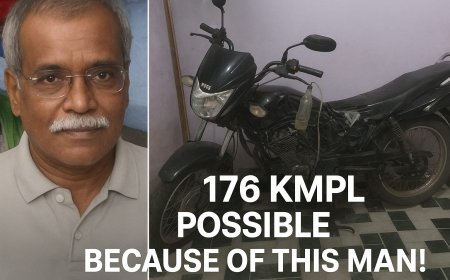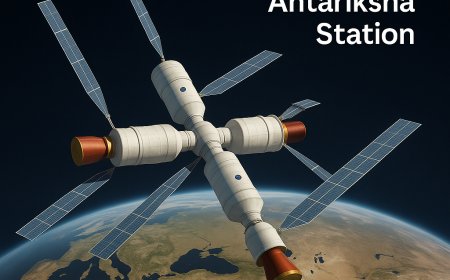Mahindra XUV 9e Breaks Down in Ladakh: Can EVs Handle Extreme Terrain Yet?
A viral Mahindra XUV 9e breakdown in Ladakh sparks concerns over EV performance in extreme terrains. Explore real challenges, Mahindra’s response, and what this means for electric vehicle travel in remote areas of India.

Electric vehicles are the future - there’s no denying that. But a recent viral video has raised some uncomfortable questions: Can EVs really handle India’s toughest terrains? Are we ready for electric road trips through the Himalayas?
A Mahindra XUV 9e recently broke down near Taglang La in Ladakh, one of the highest motorable passes in the world. The incident, captured on video and widely shared across social media, has triggered debates on EV reliability in extreme environments. Here’s a closer look at what happened, why it matters, and what it means for the future of EV travel in India.
The Journey: A Test of Power and Endurance
Rakesh, the EV owner, was part of an adventurous convoy heading from Manali to Umling La, the highest drivable point on Earth. Alongside his Mahindra XUV 9e were heavyweights like the Jaguar F-Pace, Tata Harrier, and Toyota Legender.
Things looked promising at the start. Rakesh’s vehicle was fully charged, and the team was all set for a once-in-a-lifetime road trip. However, by the time they reached Jispa—a small village en route - the battery had dropped to 50%.
This wouldn't have been a big deal if there were charging options available. Unfortunately, there were none. The hotel they checked into had no charger, no power plug, nothing that could revive the EV’s charge. The battery dipped to 30% the next morning, and they had no option but to get creative.
An Unconventional Solution: Regeneration by Towing
Here’s where things took an unusual turn.
To stretch the battery life a bit more, the team decided to tow the Mahindra XUV 9e for about 10-15 kilometers. This allowed the vehicle’s regenerative braking system to kick in, giving them a boost of roughly 10% extra charge.
This technique might sound smart, and in some ways, it was, but it also came with risks. Regeneration systems aren’t designed for long, steep towing, especially in freezing temperatures and low-oxygen environments.
Nonetheless, they managed to make it up to Taglang La. But just as hope began to return, the vehicle gave out.
The Breakdown at Taglang La
Late at night, in freezing conditions, the Mahindra XUV 9e came to a halt and displayed a critical error:
"Gear Shifter Failure: Drive vehicle without shifting gear to Mahindra dealer."
To make matters worse, the brakes and park mode were stuck. The team had to use the Jaguar F-Pace to tow the stranded EV to the roadside for safety.
While Rakesh admitted they used the towing workaround, he didn’t believe that was the reason behind the failure. According to him, the climb’s steepness, the vehicle’s weight, and the lack of charging infrastructure all played a bigger role in the eventual breakdown.
The Real Challenge: Infrastructure Gaps
This incident sheds light on a much larger issue - India’s EV infrastructure in remote areas is still in its infancy.
Places like Ladakh, Jispa, and Taglang La attract adventurous travelers every year. But they don’t yet offer the ecosystem that EVs need to function reliably. No charging stations. No power outlets. And definitely no quick roadside assistance.
These gaps leave EV owners vulnerable in situations where even a minor issue can turn into a nightmare.
Roadside Assistance That Wasn’t So Helpful
Initially, Mahindra’s Roadside Assistance (RSA) was reportedly unresponsive. Left without help, Rakesh had to contact a dealership all the way in Rajasthan.
Thankfully, that dealer stepped in, coordinated with Mahindra, and arranged for a flatbed truck to recover the vehicle. But the delay in support during such a critical situation is something Mahindra and other EV brands need to take seriously.
This isn’t an isolated incident either. Another owner from Thrissur, Kerala, reported his XUV 9e breaking down just days after purchase. A critical system fault appeared on the infotainment screen, and he, too, struggled with slow dealership support until his social media posts caught Mahindra’s attention.
What Mahindra Did Next
Once the incidents gained traction online, Mahindra responded promptly. In both cases, the vehicles were repaired, customer service improved, and communication from the company became more transparent.
Despite these hiccups, Mahindra’s electric lineup, including the XUV 9e and the upcoming BE.06 has seen over 10,000 units sold since March 2025. That’s a strong indicator of growing consumer confidence in the EV segment.
But it’s also a reminder that for EV adoption to truly go mainstream, real-world challenges like these need to be addressed swiftly and effectively.
Can EVs Really Handle Harsh Terrains Like Ladakh?
The short answer: not yet not without proper planning.
Here are some of the challenges EVs currently face in high-altitude areas like Ladakh:
1. Battery Drain: Cold weather significantly reduces battery efficiency.
2. Lack of Infrastructure: With no chargers or power supply in remote locations, EVs are stuck once the battery dies.
3. Mechanical Strain: Steep climbs, uneven terrain, and limited oxygen impact not just the battery but also electronic systems.
4. Roadside Support: Limited access to tow trucks or technical help in such areas.
These aren’t just inconveniences. They’re risks.
What EV Owners Can Learn From This
If you’re planning to take an EV into remote or high-altitude regions, here are some important takeaways:
1. Map your charging stations before your trip and confirm availability.
2. Travel in a mixed convoy with at least one fuel-based backup vehicle.
3. Avoid overloading the vehicle, as weight impacts battery drain.
4. Understand your vehicle’s limits and don’t rely on regeneration as a substitute for proper charging.
5. Keep emergency contacts handy, including your dealership and RSA hotline.
Progress Comes With Bumps
The Mahindra XUV 9e breakdown is more than just a one-off incident. It’s a case study in the challenges India’s EV ecosystem still needs to overcome.
At the same time, it’s also a testament to how quickly brands like Mahindra are learning and adapting. While the failure was unfortunate, the company’s quick recovery and continued push toward electric mobility show commitment.
If India wants to truly electrify its roads from city streets to Himalayan passes, we’ll need not just better vehicles, but stronger infrastructure, better support systems, and smarter planning.
Until then, EV travel in extreme terrains will remain a brave but risky adventure.
What's Your Reaction?
 Like
0
Like
0
 Dislike
0
Dislike
0
 Love
0
Love
0
 Funny
0
Funny
0
 Angry
0
Angry
0
 Sad
0
Sad
0
 Wow
0
Wow
0
































































































